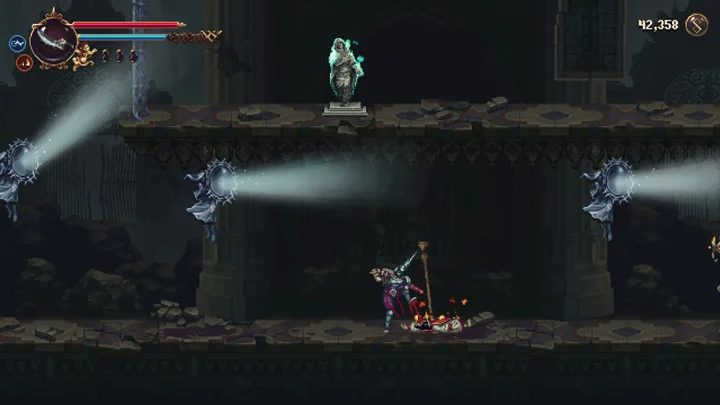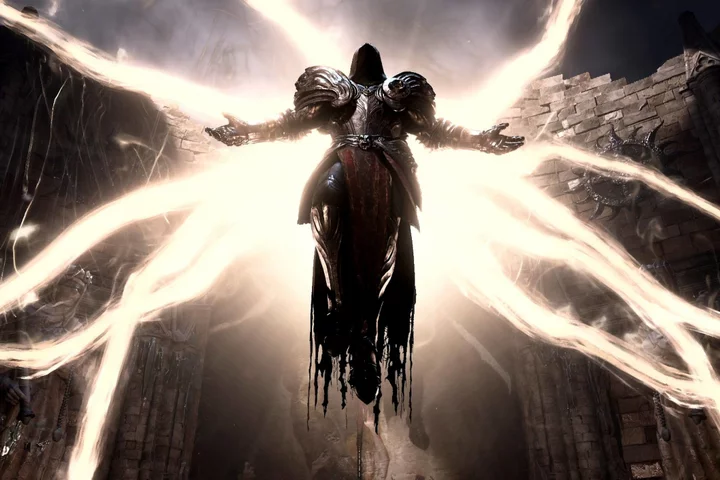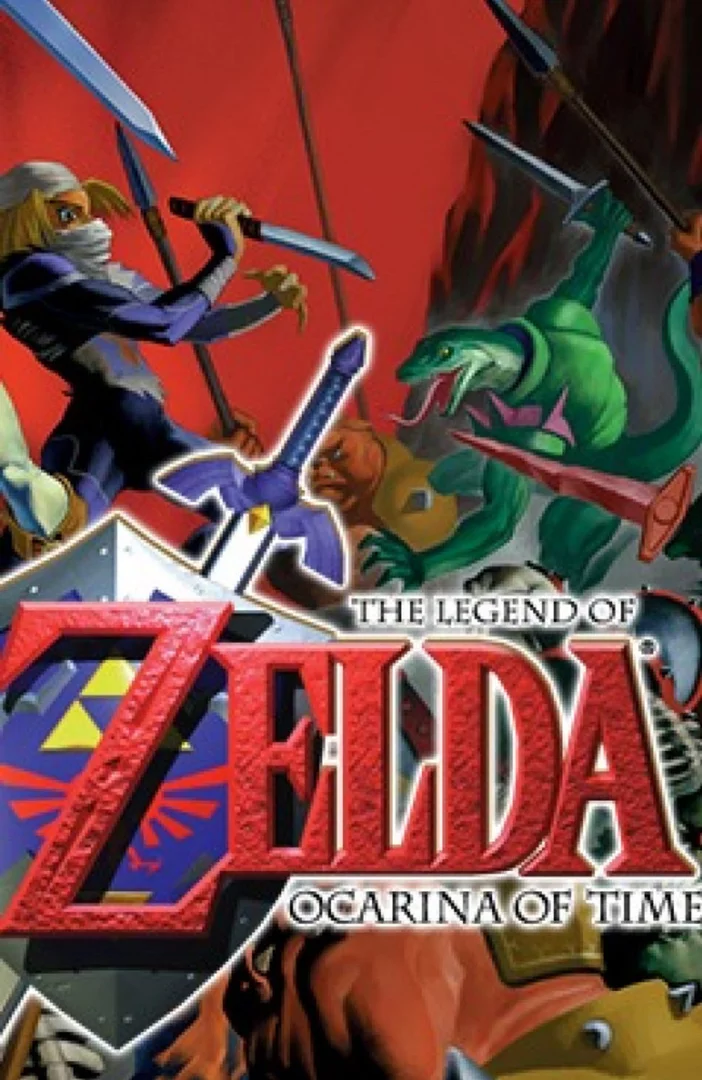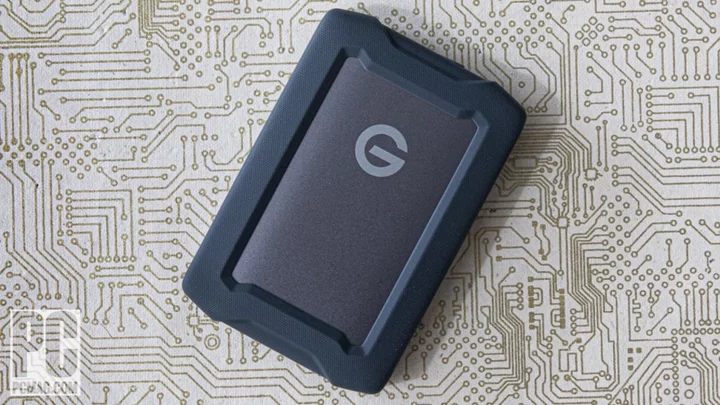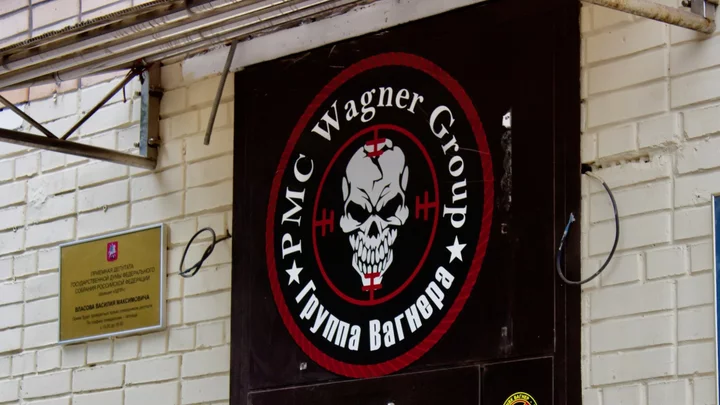Castlevania is a classic franchise that's often imitated, but rarely duplicated. That said, there are a few releases that leverage the iconic Metroidvania formula and stand out as paragons in the genre. Blasphemous 2 is one such PC game. Blasphemous 2 doesn’t innovate or reinvigorate the genre, but it doesn’t need to. Its abstract religious imagery, tight combat, snappy platforming, and clever puzzles form a great title that is well worth the $29.99 price of admission. Despite a few annoying pitfalls and tedious traps, the overall experience is excellent and merits our Editors' Choice accolade.
A Beautiful and Nightmarish World
Blasphemous 2 sees you reprise the role of the Penitent One. A supernatural entity, The Miracle, stirs once more, so the silent protagonist must take up arms to stop the prophesized birth of a miracle child.
(Credit: The Game Kitchen/Team 17)At a glance, Blasphemous 2 resembles many pixel-based side-scrolling adventures. Like its predecessor and Record of Lodoss War: Deedlit in Wonder Labyrinth, Blasphemous 2 is heavily inspired by Symphony of the Night and other Castlevania releases. These games feature bold sprites; gorgeous, multilayered backgrounds; and classic monstrosities.
Where Blasphemous differs, however, is in its lore and iconography. The game draws much of its story, naming conventions, and imagery from Catholicism. Although there is no emphasis on the Christian cross, the themes of guilt, penance, sacrifice, and sin run rampant and inspire almost every aspect of the game’s visual design.
There's an element of absurdity to the game’s artwork—a mishmash between artists Francisco de Goya and Hieronymous Bosch—that makes the characters and set pieces visually outstanding. One NPC is an obnoxiously arrogant disembodied hand being doted on by parishioners. Another is a maiden whose flesh is slowly peeled away from her limbs as the story progresses. Another is a man who bleeds and weeps honey, while bees work diligently around him. Every game zone has unique enemies to engage, each of which fit the weird and eerie setting. It’s gorgeous and bizarre.
(Credit: The Game Kitchen/Team 17)Conquer Evil and Pitfalls
The Penitent One has access to three weapon types. You can select a heavy censer/flail, a balanced curved sword, or a speedy rapier/dagger combo as your starter weapon. By doing so, the other two weapons aren't available until you find them in the game world.
Each armament has its strengths and disadvantages. The flail (called Veredicto) has great range, high-hitting attacks, and deals the most damage. The downside is that you need to find the weapon’s sweet spot to deal this damage: If you’re too close or too far away from your target, Veredicto won’t deal optimal damage. On the other hand, the rapier (Sarmiento & Centella) has excellent speed and lunging attacks, but cannot hit low enemies effectively, and deals less damage than other weapons.
In practice, all weapons have their place in combat, but it boils down to preference. Against slow enemies with lots of health, I favored Veredicto. Against aggressive enemies, I abused the parry with Sarmiento & Centella. And against groups of foes, the curved sword Ruego Al Alba was my go-to tool. But nothing stops you from leaning into one more than the other. You earn Marks of Martyrdom as you slay foes, which you can spend on weapon upgrades. These include enhanced parries and counters, additional damage, more aerial attacks, and combo extensions.
You must frequently swap between the weapons to make progress, since they're used for combat and exploration. For example, Veredicto’s weighty swings ring magical bells that materialize platforms across the vast cityscape. Ruego Al Alba has a potent downward-thrust attack that shreds mummified human walls. Sarmiento & Centella propels you at light speed when you attack certain reflective statues. Many of the more advanced puzzles task you with swapping between all three weapon functions to solve them.
(Credit: The Game Kitchen/Team 17)The action is a smooth and satisfying affair thanks to responsive jumping and weapon abilities. The world is littered with timed puzzles that require precise platforming to get through shrinking gaps, or specific weapon abilities to progress. Backtracking also reaps rewards, as the game is filled with stat-enhancing collectibles and power-ups. Blasphemous 2 is a sizeable game; just when you think it's wrapping up, it opens new areas to explore.
The only platforming irritant comes in a handful of blind drops that the game sprinkles throughout the adventure. These are thankfully rare, and you can sometimes manipulate the camera to get a slightly better view of what’s out of sight. However, there are a few annoying spots with a spike trap or pit waiting for you with no real warning or indication that they are there. The saving grace is that Blasphemous 2 lacks instant-death traps like the ones in the Mega Man series, so impaling yourself simply results in damage taken and a respawn to the jump point.
The combat is thoroughly enjoyable, particularly the energetic boss battles that test your mastery of the game’s mechanics. The challenge gauntlets, on the other hand, feel tedious by the game’s end. Blasphemous 2 locks you in rooms at various points, while spawning several waves of enemies. This commonly occurs when collecting conspicuous treasure in empty rooms, but it also happens as you progress through levels. Because you have no idea what is going to spawn your first time through, or where on the screen these threats come from, it is likely you’ll take damage in the ensuing battle. If you are already low on health, the additional, inescapable challenge simply adds frustration. This critique is a relatively minor one, however.
(Credit: The Game Kitchen/Team 17)Can Your PC Run Blasphemous 2?
Blasphemous 2 is a pixel-based, side-scrolling game, so you would be correct in assuming that it isn't particularly demanding. Your PC needs at least a 64-bit Windows 10 operating system, 4GB of RAM, and an AMD Phenom II X2 550 or Intel Duo E8400 CPU. In addition, your rig needs at least an AMD Radeon HD 7470, Intel HD Graphics 4400, or Nvidia GeForce GT 520 graphics card.
On a desktop PC with an AMD Ryzen 5 3600 CPU, Nvidia GeForce RTX 2080 GPU, and 16GB of RAM, Blasphemous 2 quickly loaded and beautifully performed. The game's native resolution is 640 by 360, but it auto-scales to fit your monitor size when playing in full-screen mode. You can also swap to various windowed modes at 360p, 720p, or 1080p resolutions. The game hovered at smooth 70 frames per second during my playthrough.
Blasphemous 2 isn't Steam Deck verified, but it ran well on Steam Deck in testing. So there's a good chance that it gets verified status at launch or soon afterward.
Why You Should Game on a PCGood Gothic Gaming
Blasphemous 2’s distinct visuals and unique gameplay spins set it apart from other Metroidvania titles, and its superb polish puts it high on the pile. It’s a fantastic side-scrolling action title, regardless of whether or not you played the first game. The bizarre and eerie imagery, responsive controls, and expansive world should keep you thoroughly engrossed for many hours on end. If you’re a Castlevania fan or a pixel art aficionado, it's absolutely worth purchasing this Editors' Choice winner for platforming games.
For in-depth video game talk, visit PCMag's Pop-Off YouTube channel.

